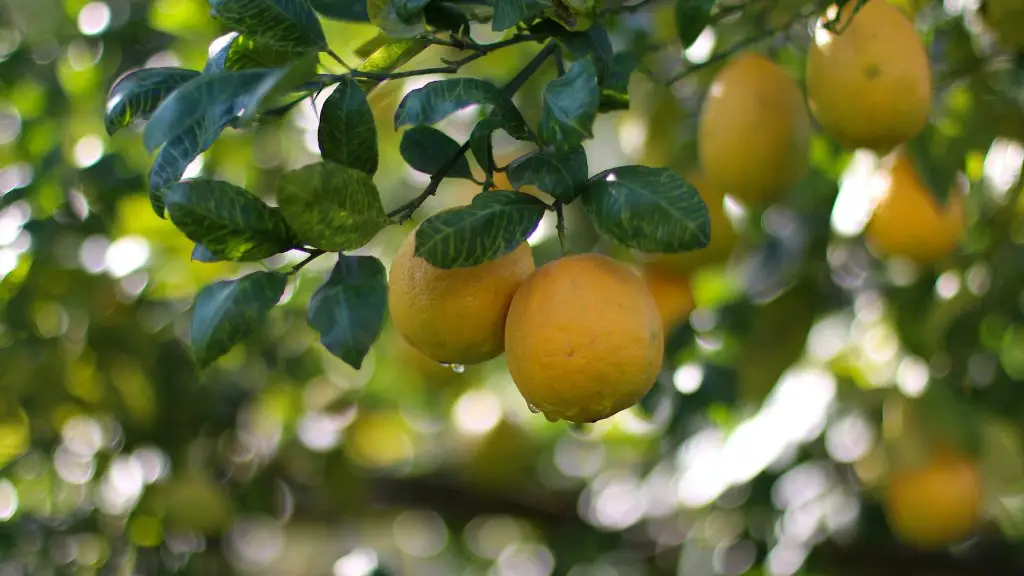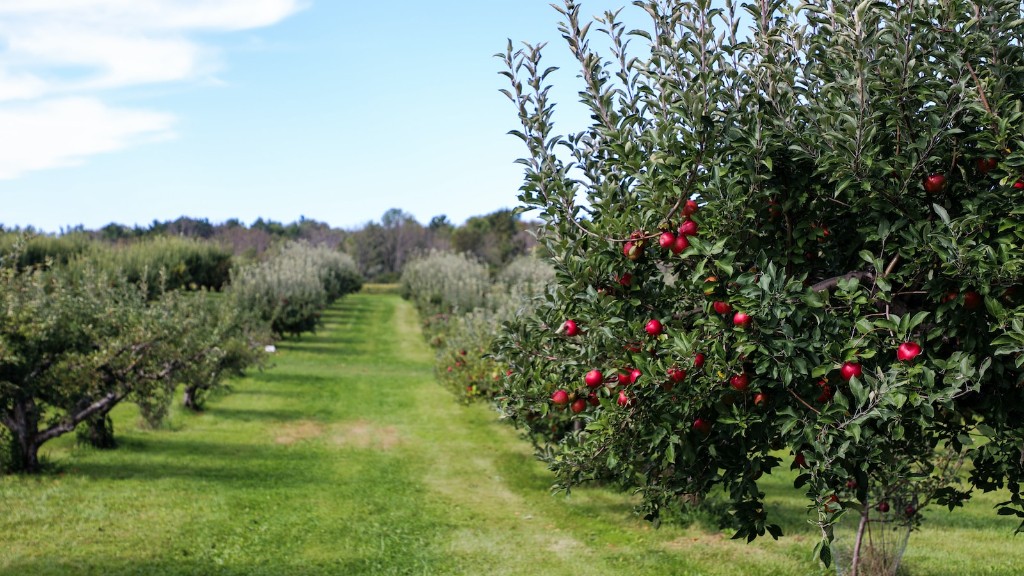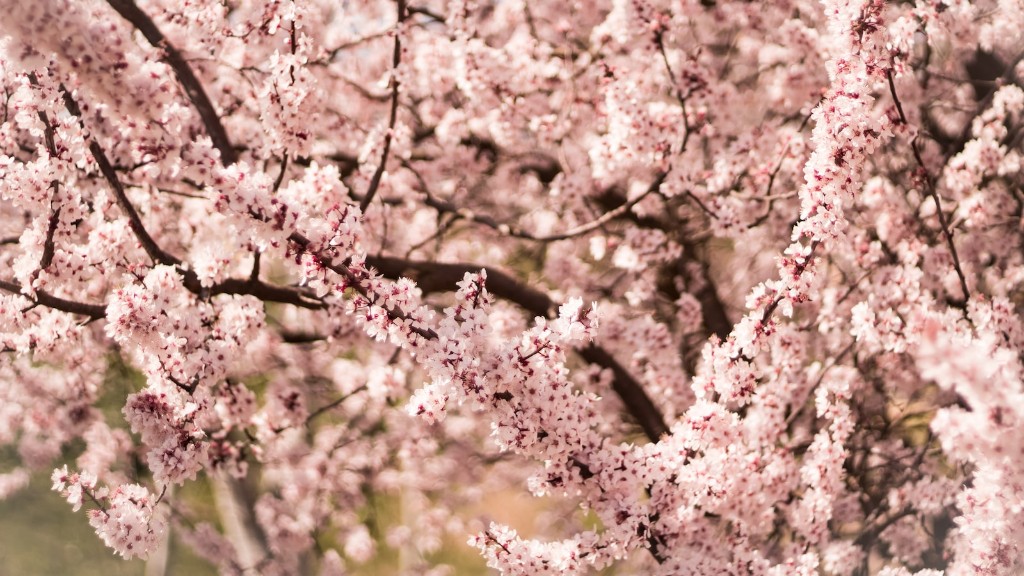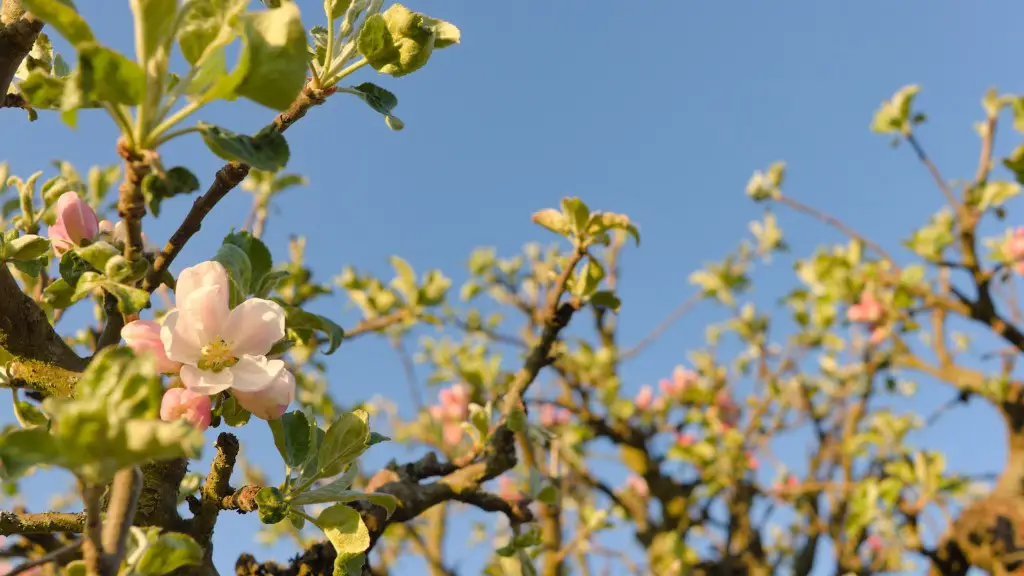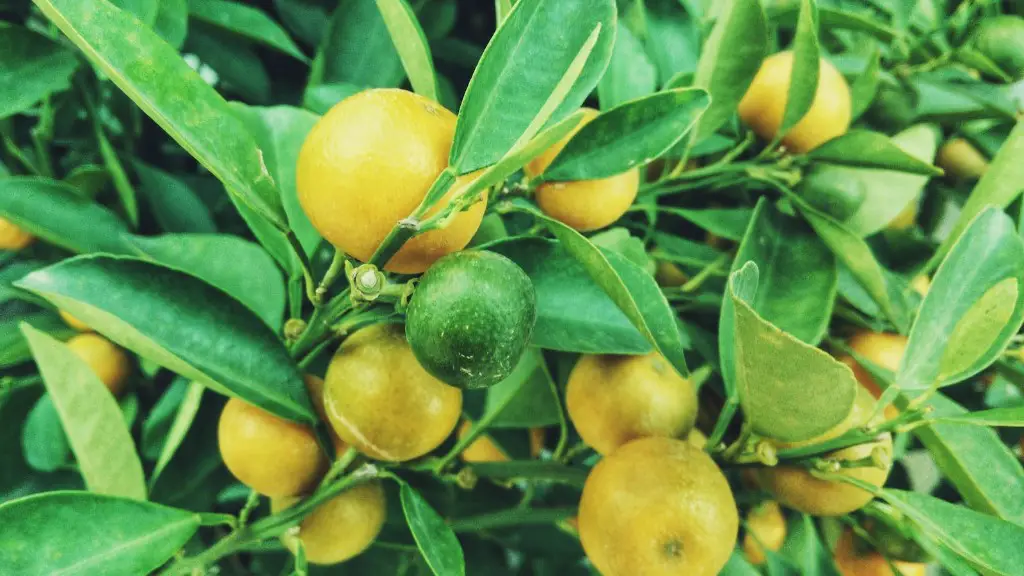It is an exciting and fulfilling experience to own a lemon tree in a pot, as it can be used to reap its fruits and enjoy the aromatic flowers grown on it. Caring for a lemon tree, however, requires dedication and patience as it is a long-term investment. Thankfully, there a few necessary steps one can take to ensure the best possible care for their lemon tree.
First of all, it is important to select the right container for a lemon tree. A pot made of breathable material, such as terracotta, is best suited as it traps moisture and encourages aeration, avoiding the roots to become too wet and cause drowning. Once the container is selected, it must be filled with a multipurpose potting soil with a good consistency of nutrients, preferably enriched with organic matter such as composted leaves and bark mulch.
Speaking of nutrients, they are critical for the health of the tree. This can be achieved by feeding the soil at regular intervals, as fertilizers provide essential minerals for the lemon tree to grow vigorously. A balanced 8-8-8 general-purpose fertilizer worked into the top 2 inches of soil is recommended. Moreover, the soil must be kept slightly moist at all times, as prolonged dry periods can cause leaf defoliation and stress on the tree.
Light is equally essential for lemon trees. In order for the foliage to stay lush, the tree must receive about 6 to 8 hours of direct sunlight each day. If the tree is not receiving enough sunlight, it can develop yellowing leaves, compromising its growth and fruiting potential. When possible, the lemon tree container should be placed in well-lit and airy places during summer, while avoiding drafts and cold during winter.
To ensure there is sufficient drainage, it is necessary to water the lemon tree whenever the top layer of soil feels dry. Do not douse the pot as it can cause root rot due to waterlogged soil, which can result in the death of the tree. Additionally, the lemon tree must be occasionally pruned, usually in the early stages of growth, to remove abnormal shaped shoots and encourage vigorous new growth.
Pruning & Fertilizing
Pruning the lemon tree is essential for its growth and manageable size, and can occur twice or thrice per season. Aim to prune the branches at their juncture, cutting away dead and damaged branches from the tree. Removing the weaker branches helps promote the healthier, new growth that will bear fruit eventually. In addition to pruning, regular fertilizing will also speed up fruit production as long as the Lemon tree is given enough water and soil nutrients.
A balanced fertilizer should be applied about two or three times a year at regular intervals, usually in the early spring season. A combination of a general-purpose fertilizer with an additional slow-release fertilizer is ideal. It is also important to activate the roots of the lemon tree with micronutrients and iron, to assist in the photosynthesis process.
Climate & Humidity
It is also essential to maintain proper climate conditions for the lemon tree to thrive. A humid environment is ideal, but it is still possible to grow a lemon in a pot even in dry climates. Regular misting can help the lemon tree to better adapt to a drier environment by preventing loss of moisture. Another important climate factor is the temperature. Lemon trees do best when the temp stays around 60-90°F, so it is best to avoid extreme temperatures and drafts of cold air.
Even indoors, the pot may still be exposed to the cold air caused by the air conditioning, which can severely damage the lemon tree by causing the leaves to yellow and flowers to fail to bloom. It is therefore recommended to place the lemon tree in a spot where the drafts of cold air can be limited. Additionally, using a heating pad in winter can maintain a warmer and stable temperature for the lemon tree to keep thriving.
Protection & Pests
Finally, it is important to protect the lemon tree from pests, as many of them can cause disease and diminish the tree’s growth potential. To avoid pests like mealybugs, scale, aphids and whiteflies, a natural insecticidal soap or neem oil can be used. Horticultural oils and soaps must be applied when the lemon tree is dormant and be careful not to spray the leaves directly with the pesticide.
Once all these steps are in place, caring for a lemon tree in a pot is a relatively easy process. Keeping the soil moist, ensuring proper nutrients and sunlight, managing the climate, and protecting the lemon tree from pests will ensure a thriving tree. With proper maintenance and patience, lemon trees are sure to provide an aromatic and lovely addition to any garden.
Aesthetic Appeal
The care of a lemon tree solely is not the only factor to consider when growing the plant in a pot. The aesthetic appeal of a lemon tree must also be taken into account. An ideal container for a lemon tree should be large enough to host the tree’s roots and make it stable, as well as to fit its eventual shape and size. Containers should also be well-ventilated, to permit its soil to stay slightly moist for a longer period of time.
When searching for the well-suited container, there are several stylish options per different tastes; terracotta, concrete and glazed ceramic pots for mostly subtle look, or bright and bold colors for those who lean towards a more striking aesthetic. It is also possible to add an irrigation system to the pot if the lemon tree is being kept indoors, such as a dripper system.
Finally, it is possible to decorate the container during the winter season with different decorative accessories, such as faux fruits, plants, small trees, flowers, and statues to further enhance the potted display. With the right container and decorative materials, a lemon tree can have a beautiful look that can add to the atmosphere of any place it is placed.
Care & Maintenance
Care and maintenance of a lemon tree in a pot go hand in hand. A well-maintained lemon tree is less likely to suffer from pests and diseases due to the enhanced environment. To preserve the life of the tree, the container must be cleaned at least every year to prevent any fungal or bacterial diseases due to cross-contamination. Discard any old soil left in the pot and start filling the container with a fresh potting mixture to revive its health.
At this point, it is possible to trim the lemon tree if necessary, eliminating any old, dead or diseased branches, allowing for fresher shoots to emerge afterwards and gain proper growth potential. Lastly, the drainage holes of the container should be unclogged if needed, usually checked at the start of the season, to prevent waterlogging and improve aeration to the roots.
Copper Sulfate Spraying
Apart from the basic care of a lemon tree, one of the most important preventative measures against disease is to spray with a fungicide containing copper sulfate. It can easily be applied by mixing 1 teaspoon of copper sulfate per liter of water, making sure to spray the entire surface of the leaves, avoiding the center and underside of the leaf to prevent any burning. Be sure to check the container for any instructions received per a specific brand’s application.
For ongoing protection, a fungicide should be applied every 6 to 8 weeks (in a growing season) over the entire tree and its leaves, as a precautionary measure to prevent the spread of plant diseases. When applying a fungicide to the lemon tree, be sure to choose a product that is compatible with other treatments and will not disrupt beneficial insects of the garden, such as beneficial aphids.
Harvest & Storage
The fruits of a lemon tree potted can generally be harvested after about two or three years of growth. A lemon tree in a pot, however, requires extra care when it comes to harvesting the fruit, as their roots will be more shallow than a tree planted in the ground; hence, the fruits must be carefully picked from the branches and leaves. The lemon fruits can then be stored by placing them in room temperature, or refrigerated for up to a month if needed.
The care for a lemon tree potted is a long-term process, but the sweet and delicious fruits it yields can be well worth it. With the right knowledge and dedication, a potted lemon tree can provide a great source of enjoyment and beauty. True, it can take time and patience to maintain a lemon tree, but once the basics are down, it can become second nature to ensure the perfect health, care, and protection of the lemon tree in a pot.
